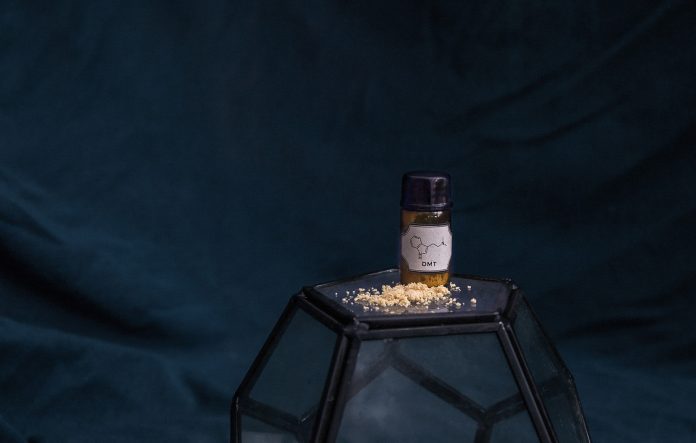N-Dimethyltryptamine or DMT as it commonly known a natural molecule that occurs in various plants as well as animals. DMT is used as a psychedelic drug and has been nicknamed the “Spirit Molecule”.
Compared to other psychedelics such as LSD or psilocybin, DMT takes effect rapidly and the trip is relatively short-lived depending on how you consume the drug.
If inhaled or injected, the effects last between five and fifteen minutes and, if orally ingested, can last more than three hours.
Earliest use of DMT
As DMT is naturally occurring in many plants, we know that humans have consumed it for hundreds of years at least. Ayahuasca, which has been used in rituals in South America for centuries, has DMT as one of its most prominent components.
In 2010, an anthropologist from Penn State University discovered a 1000-year-old shamanic pouch that they believe contains the first evidence of ayahuasca consumption.
DMT wasn’t synthesised however until 1931 by the chemist Richard Helmuth Fredrick Manske. It was the chemist and microbiologist Oswaldo Gonçalves de Lima though who discovered DMT as a natural product in plants.
In 1956, Dr. Stephen Szara administered DMT to twenty volunteers in which was the first study of the psychoactive properties.
The 1970s were a time of fear from many of the nation states over the use of psychedelic substances by citizens. This led to the Controlled Substances Act of 1971 banning DMT along with many other psychedelics.
DMT bounced back into public consciousness in no small part due to Dr. Rick Strassman and his research and resulting book, “DMT: The Spirit Molecule.”
Strassman’s research was the first to occur since the 1970s and has been seen as one of the key catalysts for putting psychedelics back on the map. Nearly all the participants in Strassman studies felt that the sessions he conducted were among the most profound experiences of their lives.
Modern research on DMT
More recent research on the qualities of DMT has largely focussed on the potential of the drug in treating depression.
A recent study found that extended doses of DMT are safe. This important study means that further research can be conducted on the possible benefits of DMT for medicinal purposes. As well as proving safe, the study also helps other researchers by allowing them to follow the same methodology.
A small Yale study published in 2022 also showed positive results in DMT treating depression. The study contained a few participants, however, so it is not definite that these results can be extrapolated to the wider public. Further and more comprehensive studies are necessary.
DMT appears to affect the “higher level” functions of the brain according to another study that examined brain activity when dosed with DMT. These functions are usually associated with imagination.
What are the risks?
One of the key issues relates to its illegality throughout most of the world.
In the U.S. the drug remains illegal apart from for religious reasons and in much of the western world it is illegal.
However, there are many South American nations where the drug is legal, including Brazil and Peru. The drug is also legal in Mexico.
Some physiological side effects include increased heart rate and blood pressure, chest pain, agitation, and dizziness. It can also cause nausea and vomiting.
Due to the psychedelic nature of the drug, some users may find that their “trip” is traumatic or upsetting and the mental side effects take sometimes last for days or weeks after taking the drug.


